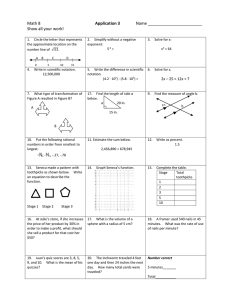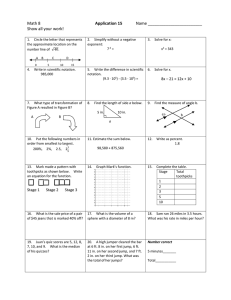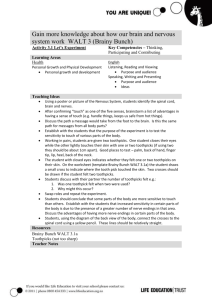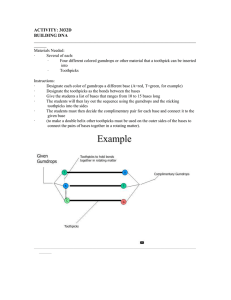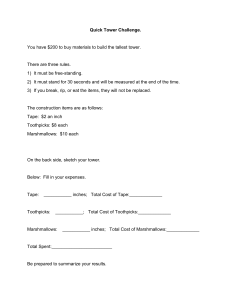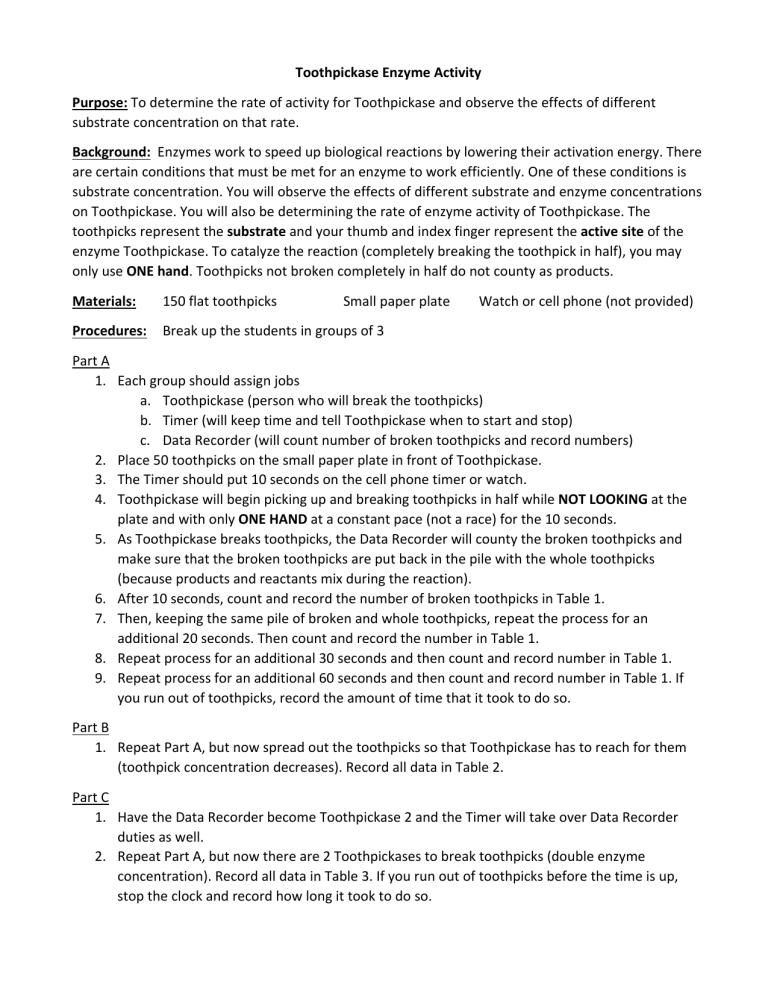
Toothpickase Enzyme Activity Purpose: To determine the rate of activity for Toothpickase and observe the effects of different substrate concentration on that rate. Background: Enzymes work to speed up biological reactions by lowering their activation energy. There are certain conditions that must be met for an enzyme to work efficiently. One of these conditions is substrate concentration. You will observe the effects of different substrate and enzyme concentrations on Toothpickase. You will also be determining the rate of enzyme activity of Toothpickase. The toothpicks represent the substrate and your thumb and index finger represent the active site of the enzyme Toothpickase. To catalyze the reaction (completely breaking the toothpick in half), you may only use ONE hand. Toothpicks not broken completely in half do not county as products. Materials: 150 flat toothpicks Small paper plate Procedures: Break up the students in groups of 3 Watch or cell phone (not provided) Part A 1. Each group should assign jobs a. Toothpickase (person who will break the toothpicks) b. Timer (will keep time and tell Toothpickase when to start and stop) c. Data Recorder (will count number of broken toothpicks and record numbers) 2. Place 50 toothpicks on the small paper plate in front of Toothpickase. 3. The Timer should put 10 seconds on the cell phone timer or watch. 4. Toothpickase will begin picking up and breaking toothpicks in half while NOT LOOKING at the plate and with only ONE HAND at a constant pace (not a race) for the 10 seconds. 5. As Toothpickase breaks toothpicks, the Data Recorder will county the broken toothpicks and make sure that the broken toothpicks are put back in the pile with the whole toothpicks (because products and reactants mix during the reaction). 6. After 10 seconds, count and record the number of broken toothpicks in Table 1. 7. Then, keeping the same pile of broken and whole toothpicks, repeat the process for an additional 20 seconds. Then count and record the number in Table 1. 8. Repeat process for an additional 30 seconds and then count and record number in Table 1. 9. Repeat process for an additional 60 seconds and then count and record number in Table 1. If you run out of toothpicks, record the amount of time that it took to do so. Part B 1. Repeat Part A, but now spread out the toothpicks so that Toothpickase has to reach for them (toothpick concentration decreases). Record all data in Table 2. Part C 1. Have the Data Recorder become Toothpickase 2 and the Timer will take over Data Recorder duties as well. 2. Repeat Part A, but now there are 2 Toothpickases to break toothpicks (double enzyme concentration). Record all data in Table 3. If you run out of toothpicks before the time is up, stop the clock and record how long it took to do so. Toothpickase Enzyme Activity Data Sheet Table 1. Toothpickase Activity Part A Interval Time (sec) 10 20 30 60 Cumulative Time (sec) 10 30 60 120 # Toothpicks Broken Table 2. Toothpickase Activity Part B – Decreased Toothpick Concentration Interval Time (sec) Cumulative Time (sec) # Toothpicks Broken 10 10 20 30 30 60 60 120 Table 3. Toothpickase Activity Part C – Double Enzyme Concentration Interval Time (sec) Cumulative Time (sec) # Toothpicks Broken 10 10 20 30 30 60 60 120 Total Broken Total Broken Total Broken Answer the below questions as a team and be prepared to share with the group. 1. What do you think would happen to the reaction rate if there were 2,000 toothpicks to begin with? Was there a limited rate for Toothpickase, or could it keep getting faster and faster? 2. What happened to the reaction rate with 2 Toothpickases working? Why? 3. What happened to the reaction rate with the toothpicks were spread out (off the plate)? Why? 4. What would have happened to the reaction rate if the broken toothpicks (products) were separated from the reactants? Why? 5. What would have happened if plastic toothpicks were added? What would they have represented?
